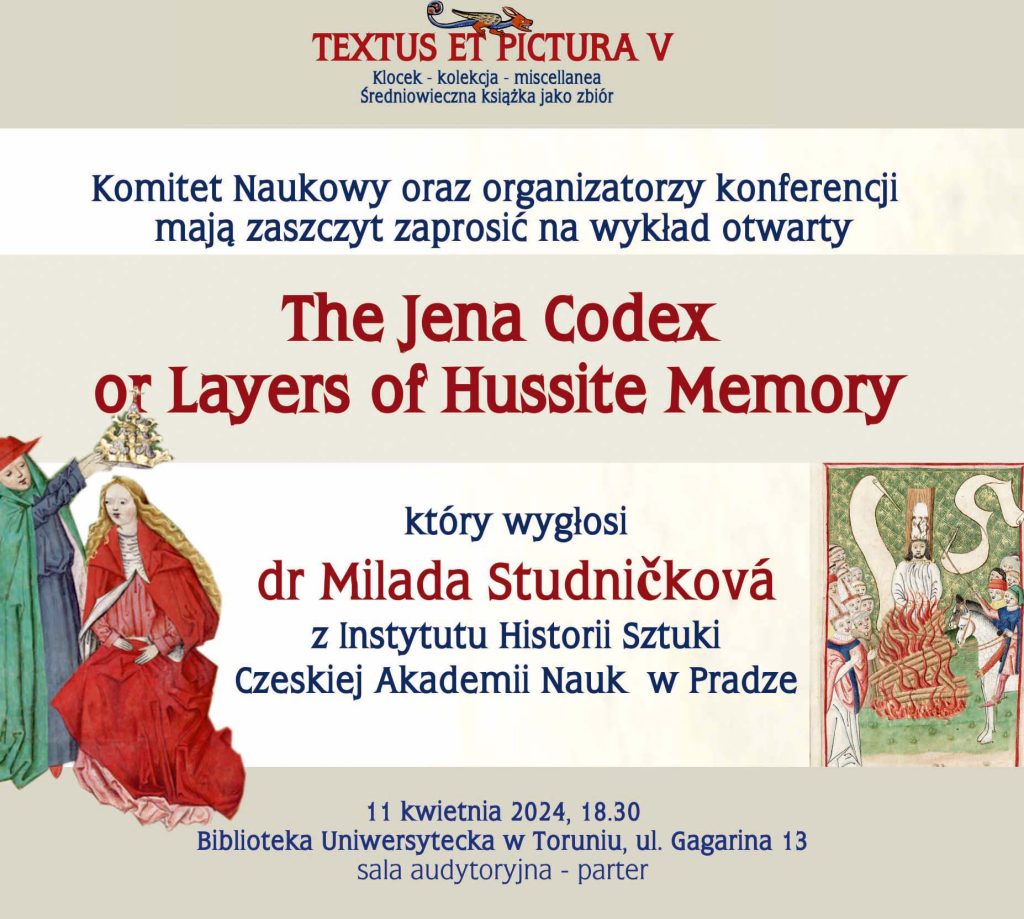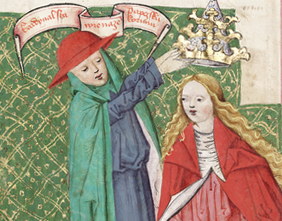
Dr Milada Studničková studiowała historię sztuki i hungarystykę na Wydziale Sztuki Uniwersytetu Eötvös Loránd w Budapeszcie oraz w Instytucie Historii Sztuki Uniwersytetu Wiedeńskiego. Specjalizuje się w iluminowanych rękopisach z XIV i XV wieku, średniowiecznych modlitewnikach i wizualnych środkach reprezentacji władców. Opublikowała liczne studia i uczestniczyła w wielu projektach, publikacjach i katalogach wystaw (Las iluminaciones del Martirologio de Usuardo, 1998; Prague, The Crown of Bohemia, 2005; Sigismundus Rex et Imperator, 2006; The Bible of Conrad of Vechta, 2006; Kutnohorská iluminace 2010; Imago / imagines, 2019; Nebeský žebřík, 2019; Knižní kultura českého středověku, 2020; Stifterbildnisse in böhmischen liturgischen Handschriften der vorhussitischen Zeit, 2021; Mitteleuropäische Schulen VII, 2022; Eliška Rejčka: Dar středověku, 2023). Jest kierownikiem projektu Libri precum: Księga godzin króla Wacława IV w kontekście modlitewników świeckich.
_________________________________________________________________________
ABSTRACT
The Jena Codex ranks among the most famous Bohemian manuscripts thanks to its unique Hussite iconography. Its illuminations have regularly appeared in school textbooks and popular publications for generations. The codex has become an object of national identification but also of Communist propaganda. After more than 400 years in Jena, it was donated in 1951 by the President of the German Democratic Republic to the Czechoslovak President as a sign of solidarity between the two socialist countries. In 1970, two years after the suppression of the Prague Spring by Soviet troops, one of the codex’s illuminations with a blind Jan Žižka at the head of the Hussite troops appeared on a 20-crown note inspiring political jokes about the blindness of the new communist leadership.
The Jena Codex is a typical codex mixtus with individual parts created in 1495–1500. Only towards the end of the first quarter of the 16th century, it gained its form, uniting various hand-written texts, an incunabule, and images. While some illuminations are indivisible parts of the texts, the manuscript also contains separate images. Most of them are executed on paper, but several are on sheets of parchment. The content encompasses diverse material of the previous century: it preserves works from the early days of the reform movement, recalls the martyrdom of John Hus, reflects the proceedings of the Council of Basel, and the events of the 1460s and the 1490s.
The lecture will introduce the Jena Codex’s individual textual and pictorial units, show how they work with apocalyptic schemes, and invoke contrasting typological pairs to educate and entertain the reader through a satirical stance. Moreover, we will discuss the possible function of the book as conceived by its creator, a member of Charles University’s Lauda College, Bohuslav of Čechtice, who copied a large part of the texts.



